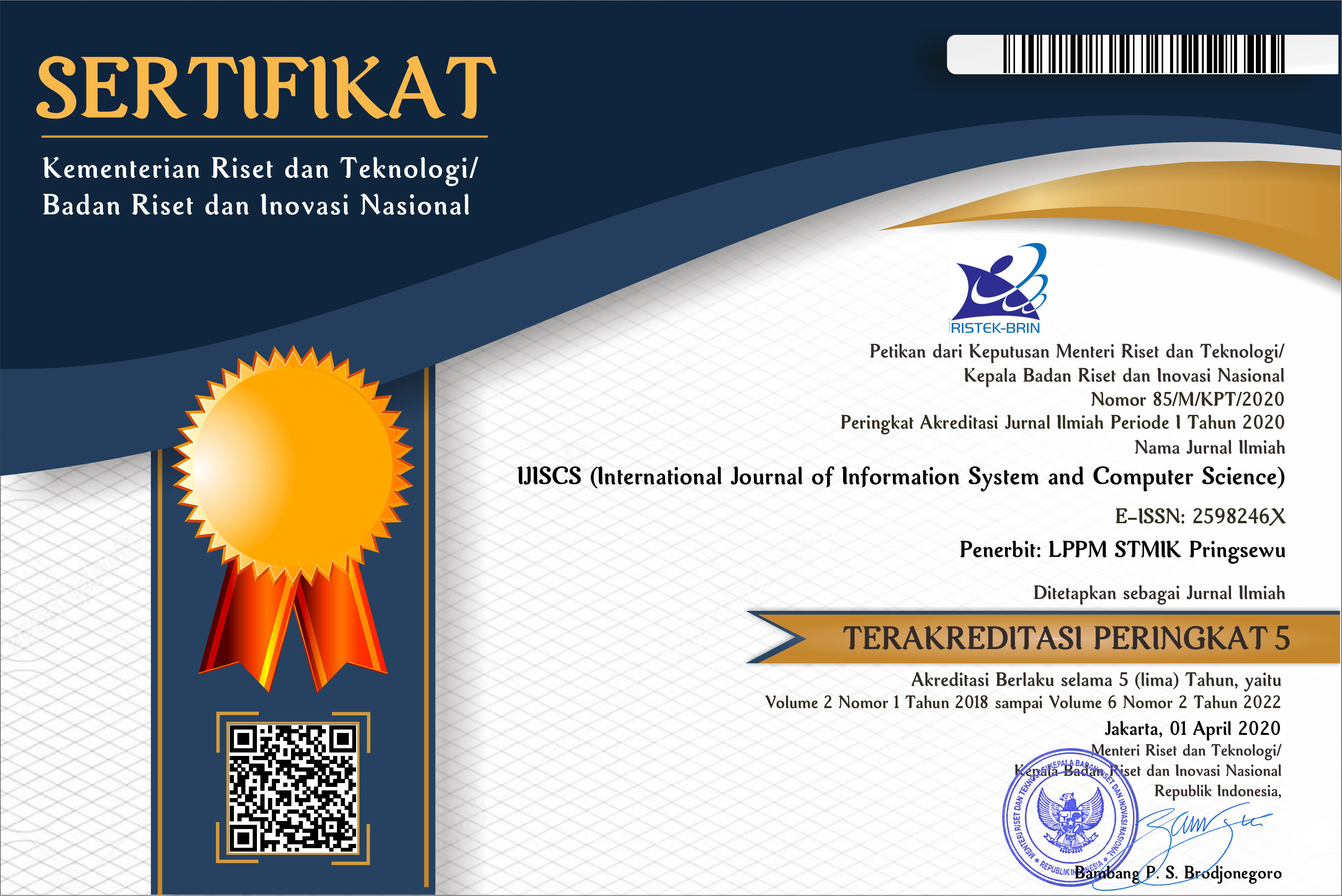DECISION SUPPORT SYSTEM FOR EMPLOYEE CONTRACT EXTENSION USING TOPSIS METHOD (CASE STUDY: GOVERNMENT & ENTERPRISE SERVICE UNIT PT. TELKOM WITEL SUMSEL)
(1) Department of Information System, Sriwijaya University, Palembang
(2) Department of Information System, Sriwijaya University, Palembang
 Corresponding Author
Corresponding Author
Abstract
Government & Enterprise Service (GES) Unit serves and manages corporate and government customers. In achieving its goals, GES Unit needs to maintain quality employees by evaluating their employees because employee performance can affect customer satisfaction. They use Excel as an assessment process by having several criteria. However, this process is not effective and allows subjectivity, so that may cause errors in judgment and make the process of determining employee contract renewals quite complicated. A decision support system is needed which can help in managing the assessment of the contract employees. The TOPSIS method will be used because It tends to be more superior and often used in multi-criteria decision making so it can be able to find the best option to evaluate several alternatives. Of the five employees, only the A2 is not extended for the contract period. With this system, the process of determining employee contract extensions becomes more efficient.
Keywords
References
N. Aminudin et al., “Weighted Product and Its Application to Measure Employee Performance,” Int. J. Eng. Technol., vol. 7, pp. 102–108, 2018.
Suparmadi and Santoso, “Application of Profile Matching Method in The Employee Decision Support System in PDAM Tirta Silaupisa Kisaran Web Based,” in International Conference on Social, Sciences and Information Technology, 2020, vol. 4509, pp. 141–150.
R. Rahim et al., “TOPSIS Method Application for Decision Support System in Internal Control for Selecting Best Employees,” J. Phys. Conf. Ser., vol. 1028, no. 1, 2018.
Sunarti, “Employee Performance Assessment for Promotion with the Topsis Method in Senayan Apartments Jakarta,” J. Publ. Informatics Eng. Res., vol. 3, no. 2, pp. 6–11, 2019.
G. Wibisono, A. Amrulloh, and E. Ujianto, “Penerapan Metode Topsis Dalam Penentuan Dosen Terbaik,” Ilk. J. Ilm., vol. 11, no. 2, pp. 102–109, 2019.
V. D. Iswari, F. Y. Arini, and M. A. Muslim, “Decision Support System for the Selection of Outstanding Students Using the AHP-TOPSIS Combination Method,” Lontar Komput. J. Ilm. Teknol. Inf., vol. 10, no. 1, pp. 40–48, 2019.
V. N. S. Lestari, H. Djanggih, A. Aswari, N. Hipan, and A. P. U. Siahaan, “Technique for Order Preference by Similarity to Ideal Solution as Decision Support Method for Determining Employee Performance of Sales Section,” Int. J. Eng. Technol., vol. 7, pp. 281–285, 2018.
S. . Fashoto, O. Amaonwu, and A. Aderenle, “Development of A Decision Support System on Employee Performance Appraisal Using AHP Model,” Int. J. Informatics Vis., vol. 2, no. 4, pp. 262–267, 2018.
M. Irfan, U. Syaripudin, C. N. Alam, and M. Hamdani, “Decision Support System for Employee Recruitment Using El Chinix Traduisant La Realite (Electre) and Weighted Product (WP),” J. Online Inform., vol. 5, no. 1, pp. 121–129, 2020.
M. Lingga, “Evaluating the Performance Employee Using TOPSIS,” in IOP Conference Series: Materials Science and Engineering, 2019, pp. 1–8.
M. A. Utami and E. L. Ruskan, “The Determination of Reward and Punishment Using WASPAS Method,” in Sriwijaya International Conference on Information Technology and Its Applications (SICONIAN 2019), 2019, vol. 172, no. Siconian 2019, pp. 696–705.
Article Metrics
Abstract View : 364 times
: 364 times Download : 76 times
Download : 76 times
DOI: 10.56327/ijiscs.v5i2.1038
Refbacks
- There are currently no refbacks.






